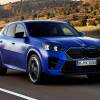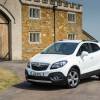
RAC sale – up to 33% off*
• Roadside cover from £5.29 a month†
• We get to most breakdowns in 60 mins or less
• Our patrols fix 4/5 breakdowns on the spot

By Jonathan Crouch
Introduction
'You drive it. You define it.' That was how Hyundai wanted us to view this car, their small Kona SUV. If you like cars of this kind, you're probably going to like this one because it ticks all the usual boxes in terms of style and fashionability. How will it fare on the used market in its standard forms though? Here, we're going to look at the facelifted 2021-2023-era versions of the mainstream combustion-engined first generation models and try and find out.
Models
5dr SUV [1.0 T-GDi, 1.6 Hybrid, 2.0 T-GDi, Electric 39kWh, Electric 64kWh]
History
Small crossovers are big business. Back in 2021, this one, the Hyundai Kona, had become the brand's second best selling model and by that point, nearly a quarter of a million Konas had found European owners since this car's original launch back in 2017. For the 2021 model year, it got a substantial mid-term update, creating the version we're going to look at here.
The Kona started life competing with SUVs based directly on superminis - Renault's Clio-based Captur, Nissan's Micra-based Juke and so on. Even though it sat on a platform originally intended for models in the next segment up. But by 2020, Hyundai had a proper supermini-sired SUV - the i20-based Bayon - positioned to sit below this car as the entry-point to this Korean maker's crossover line-up. So the Kona could be pushed up-market a little, to take on more expensive small SUVs - and maybe also to offer an alternative to the Korean brand's i30 family hatch.
A little more sophistication was required for this car to be able to meet this remit. A huge proportion of i30s of this period were being sold with sporty spec, so this enhanced Kona got that too - a more dynamic 'N Line' level of trim and a full-fat Kona N high performance variant joined the range. A line-up which by now was all-petrol powered and all fully electric; even the entry-level versions offered a 48V mild hybrid 1.0-litre powerplant, which sat below a full dosing of the Korean manufacturer's battery technology. Customers chose between a full-Hybrid 1.6-litre combustion version. Or a full-Electric derivative (also substantially updated), with a driving range of up to 300 miles.
If you knew this car in its original guise, with this facelift version you'll notice a general smartening up of the styling. And a much enhanced level of media tech inside. A new MK2 Kona design arrived in mid-2023.
What You Get
A car of this kind has to evoke a reaction from you: that's part of the point of it. And the Kona has always done that, with its muscular toning, sensuous surfaces and high-contrast fender cladding. With the initial version though, all of this was a bit, well, in-your-face - a touch unsubtle. With this updated model though, the look was far more cohesive, gym toned and confident. This is how you do a facelift.
The front of cabin experience became more sophisticated in this form. Through the steering wheel, you view a 10.25-inch screen with virtual dials, while providing you avoid entry-level trim, there's a vastly bigger central infotainment screen than with the original model - also 10.25-inches - full of features Kona folk had never had access to before. Hyundai tried to emphasise the dashboard's horizontal layout by separating the lower console area from the instrument panel. And a range of little trimming touches attempted to improve the cabin ambiance. But there was still a lot of black plastic and little of the extrovert vibe that characterised the bodywork. Some would hope for a slightly more commanding driving position too, in a car characterising itself as an SUV. On the plus side, the seats are reasonably comfortable and there's plenty of storage space. It's also easy to find a comfortable driving position, thanks to lots of wheel and seat adjustment.
And in the rear? Well it's in this part of the car that you're likely to be most keenly reminded that you've bought an SUV based on a supermini-sized chassis, rather than that of a family hatchback. As it turns out, it's not too bad in the back for the carriage of two folk, providing they're not especially lanky of leg. If they are, then compromises will be need to made by the front seat occupants in order to be able to accommodate them.
Let's finish with a few words on boot space. The tailgate is light to lift and reveals a 374-litre luggage area in the mild hybrid model; it's the same with a full-Hybrid Kona, but the figure falls to 332-litres with the Kona Electric. Push forward the 60/40 split-folding rear seat and you'll reveal a relatively flat loading floor with (in the mild hybrid variant) as much as 1,143-litres of total fresh air if you load to the roof.
What You Pay
Please fill in the form here for an exact up-to-date information.
What to Look For
Generally, most Kona customers seemed very happy with their cars. However, in our ownership survey, we came across a number of issues. One owner advised potential future buyers to always take a test drive at night to check the headlights. The non-LED ones are dim and yellow. Also, moisture can accumulate in the non-LED headlights, plus in the daytime running lights, the fog lamps and the rear combination lamps. Another owner reported that when driving at over 40mph, the vehicle wandered to the left and right without driver input. Another owner had an issue with faulty vehicle speed control with an auto model - the vehicle inexplicably lurched forward when parking and the airbag activated.
Other owners reported rubbing and grating noises from behind the wheel; look out for those on your test drive. A gear in the steering system may be the cause. There have also been reported issues with the blind spot collision warning system cutting down, the BlueLink media set-up not working correctly, the cruise control not operating properly and the forward collision warning system disabling itself during use.
Otherwise, it's just the usual things for an SUV of this type. Check all the media tech on your test drive - and the workings of the navigation system to see if it's been kept up to date. Check the touchscreens and Bluetooth connectivity. Check the upholstery for cuts and stains. And inspect the alloy wheels for kerbing damage. Check all the electrical functions too. Insist on a fully stamped-up service history, while cars with worn brake discs and pads at this age have probably had a hard life. The battery should have plenty of life left in it, but short journeys can cause premature failures.
Replacement Part
(approx based on a 2021 Kona Hybrid 1.6 GDi - Ex Vat) Front brake pads sit in the £22 bracket; rear pad sets are around £32. Front brake discs sit in the £75 bracket; rear discs are around £37. A pollen filter is around £9-£14. A pollen filter is around £18-£21. A wiper blade is in the £8-£26 bracket. An oil filter is around £8.
On the Road
News that the Kona range was, in this updated form primarily all-electrified will probably lead owners of the original design to expect more changes in the drive demeanour of the standard model than are actually delivered. As before, there were full-Hybrid and all-Electric models further up the line-up, but mainstream variants merely got 48V mild hybrid embellishment for the core three cylinder 1.0-litre T-GDi petrol unit, which offers 120PS. The difference that mild hybrid technology makes isn't very noticeable, though Hyundai provided a selectable 'Energy Flow' screen in the instrument cluster so that drivers could see how the system was working. And its WLTP-rated efficiency benefits weren't very significant either - the 1.0-litre T-GDi 48V model manages up to 47.1mpg and up to 135g/km of CO2, which is hardly any different from what you could expect from the pre-facelift un-electrified version of this engine. That's despite the addition as part of this update of the brand's 'iMT' 'intelligent Manual Transmission' system to the standard spec, which de-couples the engine from the 6-speed stick shift gearbox after the driver releases the accelerator.
For bigger efficiency gains, you need to be looking at the Kona Hybrid, which uses a four cylinder 1.6-litre GDi petrol engine mated to a 32kW electric motor powered by a lithium-ion polymer battery. The system works via a 6-speed dual clutch auto gearbox and its total output is 141PS. The Kona Hybrid's battery is only 1.56kWh in size, so there's no question of plug-in capability, but this self-charging set-up frequently reverts away from combustion power at urban speeds. Hence a properly efficient set of WLTP-rated stats - up to 57.6mpg on the combined cycle and up to 112g/km of CO2. To do better, you'll need a full-EV, the Kona Electric, available in a choice of forms. With a 39kWh battery, up to 189 miles between charges are possible, a figure you can extend to 300 miles with the 64kWh battery variant. A completely different audience was targeted by the flagship model in the Kona line-up, the powerful Kona N, which uses a 2.0-litre GDi petrol powerplant putting out 280PS through the front wheels.
Overall
Cars of this kind tend to be more about style than substance. And, sure enough, the updated version of this MK1 Kona was certainly designed to make the appropriate statement in the gym car park in this smarter, more confident-looking revised form. But this car is more than just a fashion statement. As a full-Electric model, it was, after all, one of the very first compact EVs with a properly usable range. And in full-Hybrid guise, it was the first car to challenge Toyota's dominance when it came to full-Hybrid SUVs. And, as part of this facelift, base versions brought 48V mild hybrid tech to the masses. And the Kona N high performance model was one of the first really credible track-tamed small SUVs.
So does this car have what it takes to stand out on the used market? Well most agree that it's been styled to do so - which in this segment is half the battle. The Kona Electric and the Kona N are stand-out products. And in this facelifted form, the commoner mild hybrid version stands out just a bit more in the High Street. Which for its target market, is all it really needs to do.



![Mercedes-Benz G-Class [W463A] (2018 - 2020) used car review](https://d1ix0byejyn2u7.cloudfront.net/drive/images/made/drive/images/remote/https_d2yv47kjv2gmpz.cloudfront.net/filestore/2/8/0/2_ee45a9aebaa3941/df5907bdffa66b219e3255508b71af91/2082_7a411cc465b132c_100_100_70_c1_c_c.jpg)

![BMW X1 [F48] (2015 - 2019) used car review](https://d1ix0byejyn2u7.cloudfront.net/drive/images/made/drive/images/remote/https_d2yv47kjv2gmpz.cloudfront.net/filestore/3/1/6_5f58ce4058758da/57d50b0a20952a6e39e3895370624404/613_b5d70e460109e05_100_100_70_c1_c_c.jpg)

